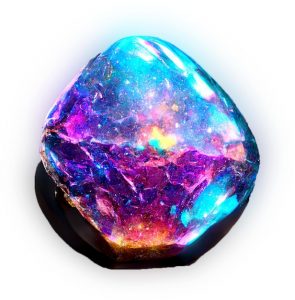Minerals are the building blocks of our planet, each possessing unique properties that make them distinguishable from one another. Whether you're a geologist, a student, or simply curious about the world around you, understanding the identifying characteristics of minerals is essential. In this article, we will delve into the seven key characteristics that enable us to differentiate minerals and explore their fascinating world.
- Crystal Structure:
One of the fundamental characteristics of minerals is their crystal structure. Minerals are composed of atoms arranged in a repeating pattern, forming distinct crystal shapes. This internal arrangement gives minerals their unique physical properties, such as cleavage, hardness, and transparency. - Color and Streak:
Color is often the first characteristic we notice when observing minerals. However, it is important to note that color alone is not always reliable for identification purposes. Instead, examining the streak, the color of the powdered mineral, can provide more accurate information. Streak is determined by rubbing the mineral against an unglazed porcelain plate, revealing its true color. - Hardness:
Mineral hardness refers to its resistance to scratching. Friedrich Mohs developed a scale of hardness ranging from 1 (softest) to 10 (hardest), with talc being the softest mineral and diamond the hardest. By testing a mineral's hardness using various tools, such as a fingernail, a copper penny, or a glass plate, we can determine its position on the Mohs scale. - Cleavage and Fracture:
Cleavage is the tendency of a mineral to break along specific planes due to its internal atomic structure. Some minerals exhibit perfect cleavage, breaking into smooth, flat surfaces, while others display uneven or conchoidal fracture patterns. Understanding a mineral's cleavage or fracture can provide valuable insights into its identity. - Luster:
Luster refers to the way light interacts with the surface of a mineral. It can be described as metallic, vitreous (glass-like), pearly, silky, or dull. By observing the reflection and quality of light on a mineral's surface, we can determine its luster, which aids in identification. - Density and Specific Gravity:
Density is the mass of a mineral per unit volume, while specific gravity compares the density of a mineral to the density of water. These characteristics can provide clues about a mineral's composition and help differentiate between similar-looking minerals. Density and specific gravity can be determined through simple experiments involving weighing the mineral and calculating its volume. - Chemical Composition:
The chemical composition of a mineral is determined by its elemental makeup. Analyzing the elements present in a mineral through techniques like X-ray fluorescence or spectroscopy can provide valuable information for identification. Additionally, minerals can be classified into groups based on their chemical composition, further aiding in their recognition.
Conclusion:
Mastering the art of identifying minerals requires a comprehensive understanding of their distinguishing characteristics. By examining crystal structure, color and streak, hardness, cleavage and fracture, luster, density and specific gravity, and chemical composition, we can unravel the secrets hidden within these remarkable geological treasures. So, the next time you stumble upon a mysterious mineral, armed with these seven identifying characteristics, you'll be well-equipped to embark on a captivating journey of discovery.





+ There are no comments
Add yours